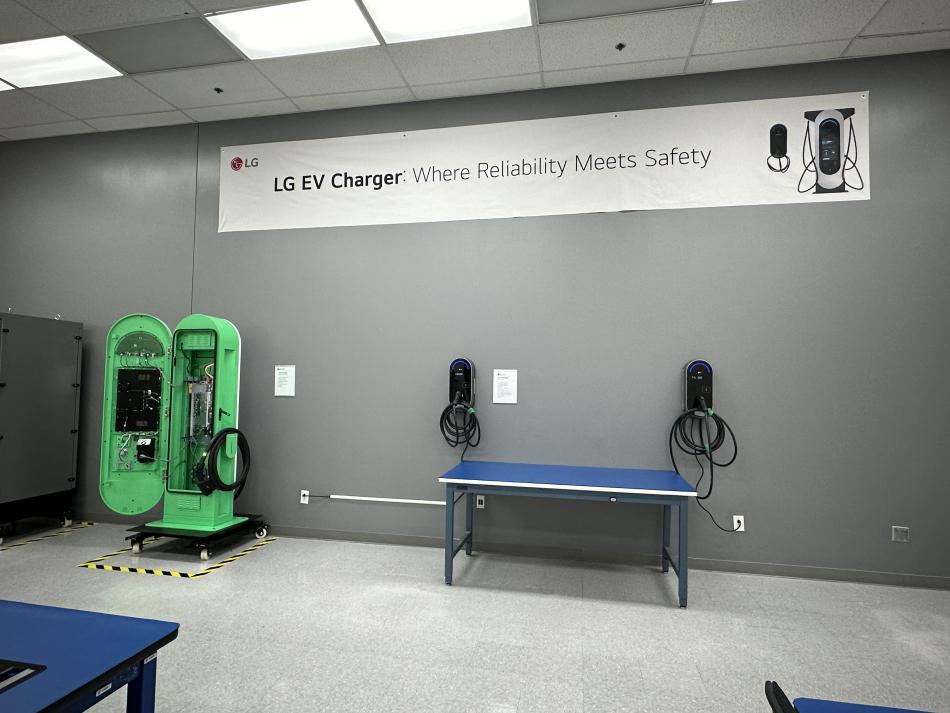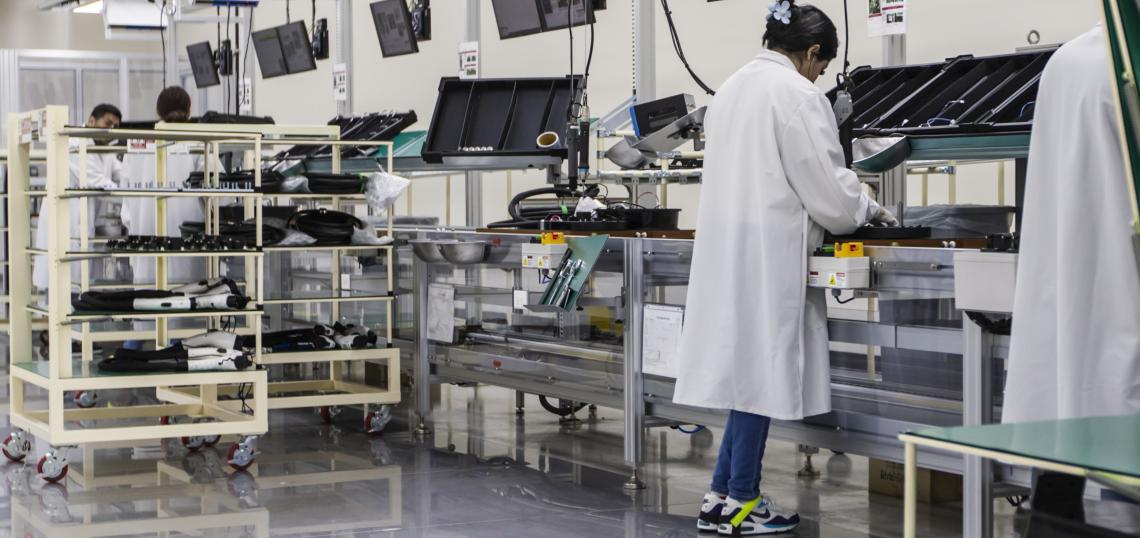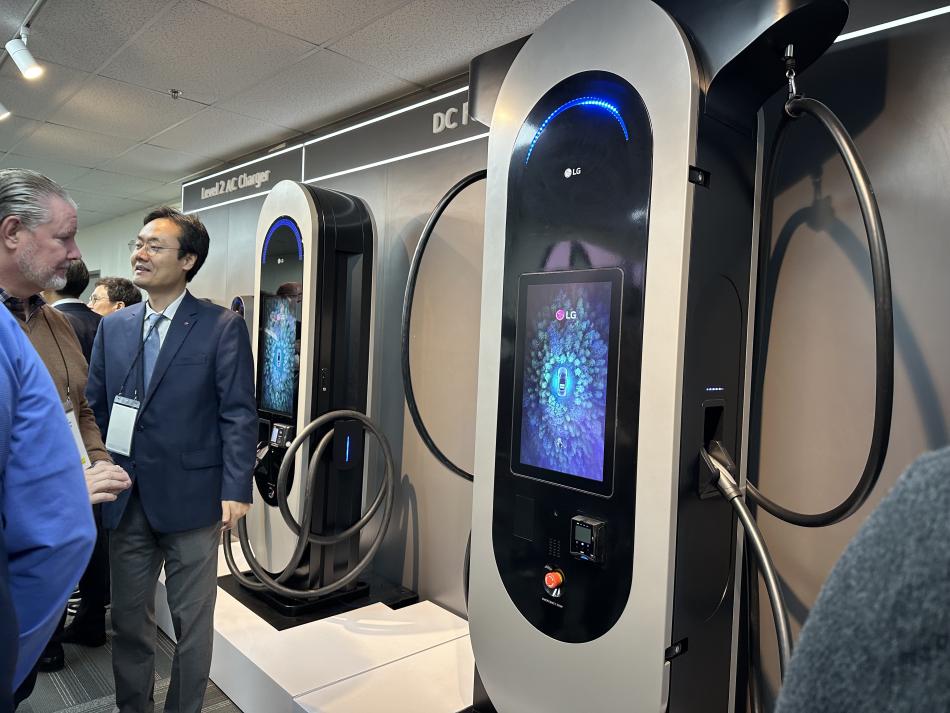On January 12, 2024, LG Electronics representatives gathered with Fort Worth officials across the street from the Fort Worth Alliance Airport to unveil the company's brand new EV charger production factory. The 100,000 SF factory will have the capacity to produce in excess of 10,000 cutting edge EV chargers annually. While LG Electronics only states the factory will bring "dozens of jobs to North Texas," DFW's draw of high-tech companies, such as SK Signet's EV charger plant, Volvo's autonomous trucking site, Ericsson's solar-powered 5G antennas, CoreWeave's data center, and Junchuang's EV parts plant.
Steve Montgomery, President and CEO of the Fort Worth Chamber of Commerce, shared his thoughts on The Metroplex's strength as an innovation hub:
LG’s decision to open their first U.S. factory for advanced EV chargers in Fort Worth is a prime example of our city’s commitment to innovation and cutting-edge technology. This exciting announcement further cements our status as a prime location for business and technological growth. The Fort Worth Chamber of Commerce congratulates LG on this notable milestone, reflecting Fort Worth’s welcoming business environment and vibrant, forward-thinking spirit.
LG, who have had a presence in Fort Worth for over a quarter century, chose to build this state-of-the-art factory in The Metroplex without any tax incentives. While it is worth noting the building itself was previously owned by LG, the capital expenditures required for converting it to an EV charger plant likely dwarfed the potential costs of building a new facility. Beyond production, the factory includes numerous quality control measures, office space, and a training area to ensure these chargers can be repaired and maintained without issue.
With orders already in hand, LG plans to fire up the production line on Monday, January 15. The facility will produce "Level 2" and "Level 3" chargers, both of which are intended for commercial applications. The Level 2 chargers, which are less onerous to install, utilize slower charging (11kW) AC power, making them practical for locations where people will leave their cars for hours at a time, such as hotels or offices. The Level 3 models, while more difficult to install, provide fast charging (175kW) via DC power, allowing users a more traditional "filling up" experience. LG's roadmap plans for "ultra-fast" (350kW) chargers later this year.
Michael Kosla, LG Business Solutions USA's Senior Vice President, spoke to the impact of these chargers:
Today marks a major step in LG’s roadmap to support the electrification of America by making the EV charging infrastructure smarter, more accessible and more profitable for operators. [The Level 2 and Level 3 EV chargers produced at this factory] will open new opportunities for businesses, municipalities and other public places to support the electrification of America with independently owned and operated charging stations that create new revenue streams, additional marketing and income opportunities, and differentiation with competing businesses.
 LG hopes to encourage adoption of their technology by providing training for service and repairs of their chargers
LG hopes to encourage adoption of their technology by providing training for service and repairs of their chargers
For CRE investors, this level of investment is something to keep a close eye on. Alliance's continued growth as an industrial hub, facilitated by a business-friendly environment, intermodal freight options, and The Metroplex's prime geographic location in the center of the country, will likely continue to be one of the many secular tailwinds driving growth in North Texas. Fort Worth city officials noted the vast untapped potential for further industrial development as more manufacturing moves to the area. Investments such as the recent I-35 expansion help to further bolster the area's attractiveness.
The utility connections required for the chargers, especially the Level 3 DC chargers, which require a transformer, make them most practical for new developments or large-scale renovations of properties. However, LG representatives were optimistic about the potential demand for retrofitting properties, despite the trenching/boring that is likely required in most cases. Representatives specifically noted the potential of the hospitality industry, where hotel flags may move to require EV chargers on all properties (hotel asset managers everywhere just started drafting requests for additional PIP funds).
Regardless of one's thoughts on EVs, it is more than likely that the infrastructure will soon become a necessity rather than a novelty. Developers and value-add investors should strongly consider installing the necessary infrastructure sooner than later, even if they themselves plan to drive their F-250 Powerstrokes until the keys are pried from their cold, dead hands. Additionally, modularity should be a key concern: what constitutes adequate EV infrastructure today may change in the future. Planning ahead will help asset managers avoid disruptions and costs should the need to upgrade arise.







